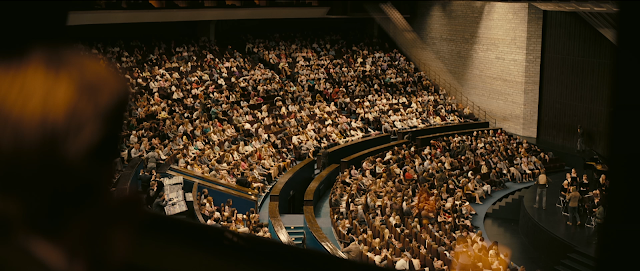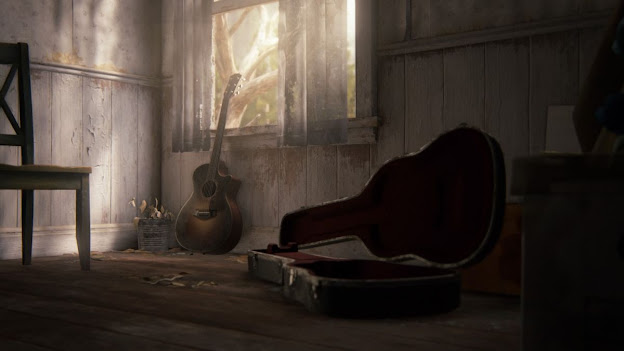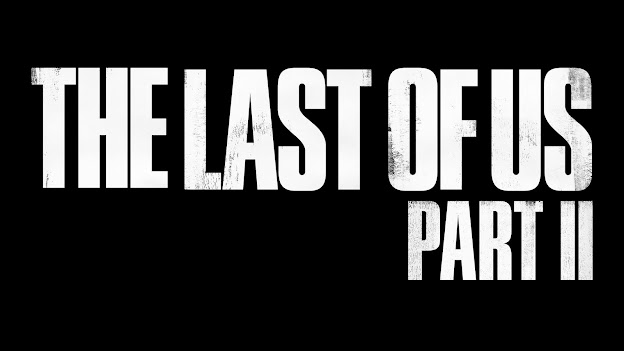With so much of the world under quarantine and a pandemic continues to reshape our lives constantly, films seen in theaters is becoming a luxury now and one such film is trying to get those butts back in, with the ambitiously tense and complex grounded sci-fi spy thriller Tenet, a new film from the one and only Christopher Nolan as writer/director on this one. This was the most anticipated new (mostly original) film from Nolan to be released worldwide near the end of 2019, before the pandemic literally crash everything related to the media industry. Made on a budget of $200+ million and shot all over the world, the excitement for this film came from the mysterious marketing and the reliably intense, hard hitting 6-minute prologue that premiered in IMAX to provide filmgoers more concrete reasons to check the film out. It was exciting, tension done well, the visual introduction of time dilation (the disruption of time and space of objects), and a rescue operation gone horribly wrong. Now with the film being out throughout the world and approved states for re-opened theaters, does it measure up to the buildup of the marketing and previews provided throughout last year or does it fall short from some of his more entertaining and satisfying films from his filmography? Let’s investigate the flow of time itself, and rewind to the very start of this mission.
We start in an opera house performance, around Russia as a terrorist action takes place and forces the country’s special force teams to move in, while in secrecy, another team slips into the action. Lead by the Protagonist (John David Washington) and his spec-op team, to infiltrate the situation and extract a sleeper agent with info and access to supposedly plutonium. The mission goes sideways in numerous ways and introduces a bullet that can go reverse in time by a mysterious life saver with a red tin in a backpack, as well as his team being compromised by double agents. The Protagonist kills himself, despite being tortured and under duress at the hands of the Russian agents, only to awaken in the middle of nowhere learning of the pill being a fake cyanide capsule that only induces a coma, not death. He is informed of a mission that will take him through the flow of time itself called Tenet, an assignment that requires him to figure out how a ruthless and efficient Russian operator is going to bring about the end of the world through Inversion (the reverse flow of time itself). This sends the Protagonist on a world spanning adventure to discover the true intentions of Tenet and save the world from a delusional villain that wants to bring it to an end.
This seems like a complicated and twisty road of espionage and action, but it becomes so much more than that through its eventual twists/turns that are accustoms to Nolan’s narratives as usual. In this case, it is the concepts of time loops and the fatalism of causality to ensure the loop is maintain, no matter the cost, told through the traditional James Bond style adventure with a sci-fi element to literally shake things up. It spends the first half establishing the mechanics and conflict of the film before the second half ratchets it up and goes bonkers with some of the most inventive, jaw dropping action set pieces devilishly crafted on film. But what seems like a slick yet coldly crafted adventure reveals its humanity by the very end in such a disarming matter, that it makes the entire film work as a whole, despite the few major missteps that make it stumble in getting to its overall point of this mission.
The real star of the show and a good reason to see this on the best screen and sound setup possible is the absolutely creative and well-crafted action set pieces featured throughout the entire film that escalates in a way that works and entertains exceptionally well on their own. You have the fantastic cold opening of the opera house siege that kicks things off, some down time to explain the mechanics and world build, then you ratchet it up by going completely crazy with it. This is worth experiencing cold for sure but the manipulation of proven cinema/editing tricks with the genius way it is crafted with a blend of practical and VFX/Optical quality to make it look seamless really shows the budget being well spent and on the screen. When you have an actual cargo plane being crashed into a building for literally a comic relief moment, that’s how big in scale and scope these sequences become, especially when they flip it around in a way that is truly a spectacle in of itself. On a pure action scale, it delivers on that front and then some, proving once again to truly create spectacle that is unmatched by many filmmakers working today.
Where it stumbles in the areas where in his other films were
more entwined to the main plot because it didn’t sacrifice too much of it,
character development and structured arcs for at least the principal characters
that matter in this adventure. The
interactions with Protagonist played by John David Washington and Katherine
"Kat" Barton played by Elizabeth Debicki should have emotional weight
to it but due to the choppy editing and stilted dialogue, it falls flat by its
eventual conclusion and makes the most sense to criticize from those that were
able to see this film. As for Debicki as
Kat, she does an admirable job with a thinly developed yet emotionally
relatable female character trapped between freedom and love for her son, which
she conveys effectively enough. Where one
of the emotional arc does come through as clear as day is with the complicated
yet endearing friendship between The Protagonist and Neil played by Robert
Pattinson, whom has a mysteriously good chemistry with the lead and they work
together on numerous missions until one moment redefines it in a way that not
only provides the emotional core of this tale, but does so in a way that really
elevates the entire adventure for the better.
As for the villain Andrei Sator played by Kenneth Branagh, he is
delightfully switching between intriguingly menacing to cartoonish evil in
such a way that he wouldn’t feel out of place in a proper Bond film. Ultimately, the film is carried and held
together by its few yet effectively handled dramatic moments but mostly by the
purely mad spectacle on display that provides most of the entertainment from
this film, even if the emotional core of it isn’t quite as strong as his
previous endeavors.
Now for the performances in general, we start with Washington as the Protagonist or CIA Operative assigned mysteriously to accomplish this mission. While he is mostly playing a stoic archetype for most of the film, he definitely holds his own and provides the anchor for the audience to project themselves for the narrative. The standout of the cast is Robert Pattinson as Neil, who provides a ton of charm and personality to a supporting role only to end up being one of the only emotional beats that resonates from start to finish that elevates the whole film. With Debicki as Kat, she portrays a woman being torn between protecting her son and wanting to break from Sator’s control over her life, providing the human element to the villain’s world which is decent enough to move the plot forward but isn’t given enough screen time and handled poorly to resonate with the viewers. As for most of the cast, Branagh as Sator is just having a ball playing a vicious villain and there are at least 2 actors here that are in character roles with one (Aaron Johnson of Kick-Ass! Fame) disappearing in a character that is not “Captain Price” of Modern Warfare game series. The cast in general is great, provide their unique qualities to the characters despite the writing feeling sparse for some of them, and ultimately fit the archetypes they play as in the film.
Let’s finally get into the aspects of the film where it
completely shines the brightest, with some of the most talented and hardworking
people in a film production, the technical aspects starting with the
cinematography and editing of the film.
This was shot by Hoyte van Hoytema (worked with Nolan on Interstellar
& Dunkirk) and edited by Jennifer Lame (worked with Noah Baumbach
on numerous films as Editor), and their expertise is on display especially with
the expansive, natural look of the film along with the solid and energetic
pacing on display. The film was shot on
70mm and as usual, creates a grounded look to the action and locales that comes
across reliably well, as it had with Hoytema’s previous work with Nolan on his
other films that have used the format.
As for the editing, the action beats are handled extremely well in
pacing out the intense moments with tension, related to the way time flow works
with the film’s premise, even though where the flaws occur on the awkward, fast
cutting for the dialogue exchanges specifically with Protagonist and Kat. Despite how gorgeously shot the film is and
the action beats being expertly handled in pacing and effect, the dialogue
scenes are the most inconsistent of the editing process as they range from
clear, concise to incoherently disjointed and too rushed to feel the emotional
weight of the performances, which undercuts the impact of the interactions
between the Washington and Debicki that makes it hard to really convey any form
of romantic development to make the last parts of the film land
emotionally. Other than those flaws,
both elements of the way the film is shot is still exceptionally handled and is
a truly gorgeous film to watch on a quality screen (no doubt, this film truly
pops even better on a true cinema IMAX screen).
As we have already explored the action beats of the film in conjunction with its narrative along with the way the film was edited and shot, let’s dive into the most controversial and contentious aspect of the film being the overall sound design of the film. For the soundscape of the film, it is very visceral and hard hitting that gives the action beats quite the punch reliably on par with his last few films. This does at times, muffle the dialogue in quite a few scenes where crucial information of the plot or character motivation does fly by pretty quickly (this is prevalent to the scenes where the characters wear O2 masks for the scenes in the Inverted Dimension). However, the film excels at conveying the story through the visuals and the sound design outside of dialogue issues, hits hard and powerful when it comes to the action sequences. With a decent sound system or an IMAX screening, you will get the most out of the film and it is of the opinion that the issues with the sound design is subjective overall in this regard, but for the viewer it was suitable to what was going on and was done to make the world sound natural and grounded, which can be a problem to those not used to this approach to sounds in a Nolan film.
Finally, we have to mention the fantastic and wonderfully crafted soundtrack from Ludwig Göransson, hot off his celebrated work in Marvel’s Black Panther and Star Wars: The Mandalorian. This is once again, another truly astounding collection of work that truly feels tailor made for this film and conveys the mystery as well as intrigue of a Bond Adventure with a Sci-Fi bent mixed in. The use of electronic synthesizers and orchestra pieces for the quieter moments give the film a defined and unique musical identity that feels fully realized and works so well with the pacing of the film that it adds to the strengths of the film as a whole. His ability to define a story through music as well as the characters in it are still of top quality here, with some of the notable qualities on display from his previous work. This is Göransson’s finest work so far and continues to prove his talents with an exceptional score that truly enhances and gives so much energy to many of the scenes in this film, proving once again the importance of music in film.
At last, we should finally end where it begins with Tenet. This is one of the more twisty and surprisingly unconventional spin on what is a relatively straightforward globetrotting spy adventure in the veins of an outlandish Bond film mixed with a unique take on the conventions of time travel. What gives the film its obvious strengths are the inventive and wholly jaw dropping action set pieces that truly are stunning and amazing to watch, with so many moments of incredible “how did they do that?” popping up in a positive matter as well as exceptionally crafted that challenge even the best in the genre of films. The performances are reliably strong from everyone in the cast, with a stoic yet determined performance from Washington and the show stealing performances going to Pattinson and Branagh for their respective roles. While the character development is pared down and told mostly visually, the film does hide its humanity at the very end but lands mostly effectively despite the underdeveloped chemistry between Protagonist and Kat making their end point feel hollow in the final moments. This is truly a uniquely crafted spy adventure with Nolan’s signature touch to it and for the most part, a spectacle worthy of praise despite coming up short in areas that matter for a film to resonate beyond the surface level reactions to it.
Score ⭐⭐⭐⭐ out of ⭐⭐⭐⭐⭐
Tenet is a spy adventure spectacle on par with some of the most entertaining and enjoyable Bond adventures of old, but with a unique take on the Sci-Fi elements of Time Travel that give make it different from many of the films of this genre. The performances are fantastic from everyone involved with 2 standout characters and outside of the dull and ineffective chemistry connection between Protagonist and Kat, everyone plays off each other rather well. The story while it lands realtively well by the end and surprisingly hits hard in the most unexpected way, it can be a bit heady and twisty to a fault that will require at least 2 viewings to really grasps the motivations and arcs of the principal characters. However, the extravagant and exceptionally crafted action set pieces are the real highlights and evolves the familar cinematic tricks of action in a way that truly is intense, hard hitting, and clearly done in such inventive creative ways that makes them worth seeing on the best screen with sound systems possible. This is made all the more effective with the flawed yet still meticulously crafted sound design that amplifies the moments with its fantastic score from Göransson and the action. Overall, this is definitely a blend of the style of a blockbuster action film with the elements of a sci-fi genre troupe with a complex spin to it the provides some of the finest action set pieces yet in the genre and breathes some loving life to the outlandish styles of a Bond style spy adventure.



















































